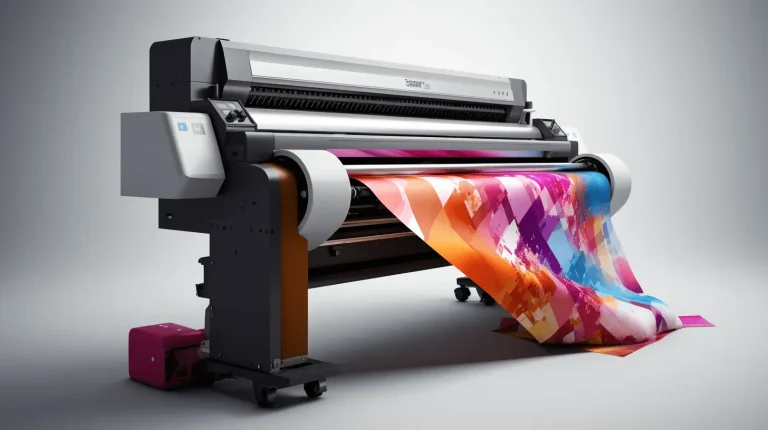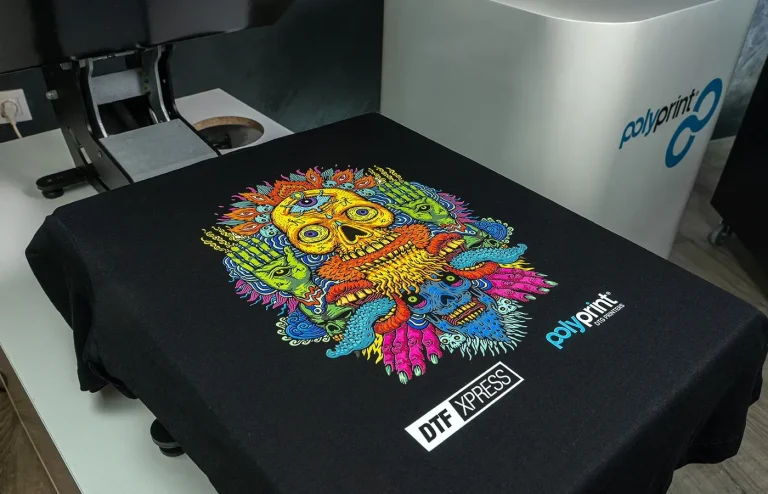DTF Printing Techniques: A Complete Step-by-Step Guide
DTF printing techniques, or Direct-to-Film printing techniques, are revolutionizing the way designs are transferred onto fabrics, enabling a unique blend of creativity and precision. With the rise of the DTF printing process, more enthusiasts and professionals are exploring this innovative method for creating custom apparel, which includes everything from intricate artwork to bold logos. This technique allows for vibrant and detailed prints that adhere well to a variety of materials, making it a go-to choice for many in the textile industry. As the demand for personalized clothing continues to grow, understanding the best DTF inks and essential DTF printing equipment becomes crucial for achieving outstanding results. In this guide, we’ll uncover valuable DTF printing tips and insights to help you master this exciting printing technology and elevate your creations.
Known as Direct-to-Film printing, this modern textile printing method employs advanced technology to transfer intricate designs onto materials efficiently. By utilizing specialized films and heat applications, this technique opens doors to vibrant color palettes that can adapt to various fabrics, making it a versatile choice for both commercial and personal projects. The DTF printing process not only offers an accessible entry point for newcomers but also boasts advanced capabilities that satisfy professional demands. For those looking to enhance their skills, exploring the best DTF inks and the right equipment is essential to achieving high-quality prints. With practical DTF printing tips and tricks, you can navigate this dynamic field and create stunning printed products.
Understanding the DTF Printing Process
The DTF printing process is a revolutionary method that allows creators to print intricate designs onto various fabric types with ease. At its core, DTF printing involves printing on a special film and transferring that design onto textiles using heat and pressure. This innovative solution not only eliminates the limitations of traditional print methods but also delivers vibrant colors and detailed designs even on complex textiles such as cotton, polyester, and their blends.
The fundamental technology behind DTF printing lays the groundwork for a broad range of applications, making it an attractive option for small businesses and independent creators. The unique ability to produce high-quality prints, thanks to the use of specialized DTF inks, means that creators can confidently offer a diverse catalog of customizable products, including garments and accessories.
Essential DTF Printing Equipment
To get started with DTF printing, it’s essential to acquire the right equipment that plays a crucial role in the success of your printing endeavors. This includes a high-quality inkjet printer compatible with DTF inks, which is vital for achieving the best results. Notable models from manufacturers like Epson are specifically designed to enhance the capabilities of DTF printing, ensuring smoother operation and higher print quality.
In addition to the printer, a reliable heat press is crucial to transferring the designs effectively onto fabrics. Choosing a model that offers adjustable temperature and pressure settings can significantly impact the final output, ensuring that the prints adhere properly and retain their vibrancy. Furthermore, procuring quality transfer films and adhesive powders will broaden your capabilities, as these materials directly influence the adhesion and durability of the prints.
Optimizing Your DTF Printing Techniques
To achieve exceptional results in DTF printing, mastering a few essential techniques can make all the difference. One of the most critical tips is to always use high-quality DTF inks and premium transfer films. Choosing subpar materials can compromise the vibrancy, durability, and longevity of printed designs, leading to dissatisfaction among customers and potential loss in sales.
Additionally, regular maintenance of your DTF printer enhances reliability and ensures consistent high-quality output. Ink clogging can significantly affect the print clarity; therefore, performing routine checks and cleaning can prevent such issues. Testing different heat press settings with various fabrics is also beneficial, as this allows you to refine your processes and yield the best results on a range of materials.
Addressing Common DTF Printing Challenges
While DTF printing is generally straightforward, certain challenges may arise that require troubleshooting. For example, poor adhesion often results from incorrect heat press settings or improperly cured adhesive, which can cause designs to peel off. Ensuring that you follow the recommended temperature and timing guidelines for each fabric type is essential.
Color quality is another common concern in DTF printing, typically arising from low print resolution or incorrect printer settings. By adjusting your settings to match the specific requirements of the transfer film, and performing test prints, you can achieve cleaner and more accurate color outputs. Moreover, conducting wash tests on printed textiles is crucial for assessing durability and colorfastness before products reach consumers.
Emerging Trends in DTF Printing
As the DTF printing landscape evolves, several trends are emerging that are influencing how businesses and creators adopt this technology. Innovations in ink formulations are enhancing the environmental sustainability of DTF printing, allowing for eco-friendly options without sacrificing print quality or durability. As consumer demand shifts towards sustainable practices, staying updated on these advancements can provide a competitive edge.
Additionally, ongoing improvements in transfer materials and printing techniques are making DTF printing increasingly versatile. Printers are expected to adapt to an ever-growing array of customization options, allowing businesses to meet diverse customer needs. Embracing these trends not only inspires creativity but also fosters a culture of innovation within the realm of custom apparel and textiles.
Getting Started with DTF Printing: A Beginner’s Guide
Beginning your journey in DTF printing might seem daunting at first. However, by following a structured approach, you can navigate the complexities of this method with ease. Start by familiarizing yourself with graphic design software such as Adobe Illustrator or CorelDRAW, which are vital for crafting your designs. Mirroring your images before printing is a key step, as it ensures the final transfer appears correctly on the fabric.
Next, invest in the essential equipment, including a quality printer compatible with DTF inks and a heat press. As you set up your workspace, don’t forget to gather your transfer film and adhesive powders, which are critical in the DTF printing process. With the right preparation and knowledge, you will be well-equipped to create stunning prints that could transform your creative aspirations into reality.
Frequently Asked Questions
What is DTF printing and how does the DTF printing process work?
DTF printing, or Direct-to-Film printing, is a technique that involves printing designs onto a special film and transferring them onto various fabrics using heat and pressure. This DTF printing process allows for vibrant colors and intricate designs, providing high-quality results on materials like cotton, polyester, and blends.
What equipment do I need for successful DTF printing?
Essential DTF printing equipment includes a high-quality inkjet printer compatible with DTF inks, a reliable heat press with adjustable settings, transfer film (e.g., PET film), and adhesive powder to ensure proper adhesion of the printed design to the fabric.
What are some important DTF printing tips for beginners?
Beginner DTF printing tips include using high-quality inks and transfer films, regularly maintaining your printer to avoid ink clogging, conducting temperature tests with your heat press for optimal adhesion, and experimenting with fabric types to determine which yields the best print results.
How can I choose the best DTF inks for my printing projects?
Choosing the best DTF inks involves selecting high-quality inks that are compatible with your printer model and capable of providing vibrant, long-lasting colors. Brands known for their DTF inks often emphasize durability and wash resistance, which are crucial for maintaining print quality over time.
What common issues should I look out for in DTF printing and how can I troubleshoot them?
Common issues in DTF printing include poor adhesion, which can be addressed by checking heat press settings and curing techniques; color quality issues, best resolved by ensuring high print resolutions and correct printer settings; and durability concerns, which can be assessed through rigorous wash tests on fabric samples.
What recent developments are influencing DTF printing technology?
Recent developments in DTF printing technology focus on enhanced ink formulations and transfer materials aimed at improving durability, wash resistance, and eco-friendliness, aligning with sustainability trends and allowing printers to better meet diverse customer needs.
| Key Component | Details |
|---|---|
| DTF Printing Definition | A new printing technique that uses a special film to transfer designs onto fabrics using heat and pressure. |
| Essential Equipment | High-quality inkjet printer, heat press machine, transfer film, and adhesive powder are necessary to start DTF printing. |
| Printing Process | 1. Design preparation using graphic software. 2. Printing with DTF inks on film. 3. Applying adhesive powder. 4. Heat transfer onto the fabric. 5. Peeling the film backing post-transfer. |
| Best Practices | Use quality inks and films, maintain the printer, conduct test prints, and experiment with various fabrics to optimize results. |
| Troubleshooting | Address issues related to poor adhesion, color quality, and durability by checking settings and performing wash tests. |
| Recent Developments | The industry is evolving with advancements that improve durability, wash resistance, and sustainability in DTF printing. |
Summary
DTF printing techniques have revolutionized the textile printing landscape, enabling creatives to explore a plethora of possibilities. This innovative method not only facilitates vibrant and intricate designs but also adapts to various fabric types, making it a favorite among small businesses and hobbyists alike. By equipping yourself with the right tools and knowledge—ranging from understanding the intricacies of the process to keeping up with the latest advancements—you can maximize the potential of DTF printing. It is an opportunity to combine creativity with commerce, positioning your ventures for success in the evolving market of custom apparel.



